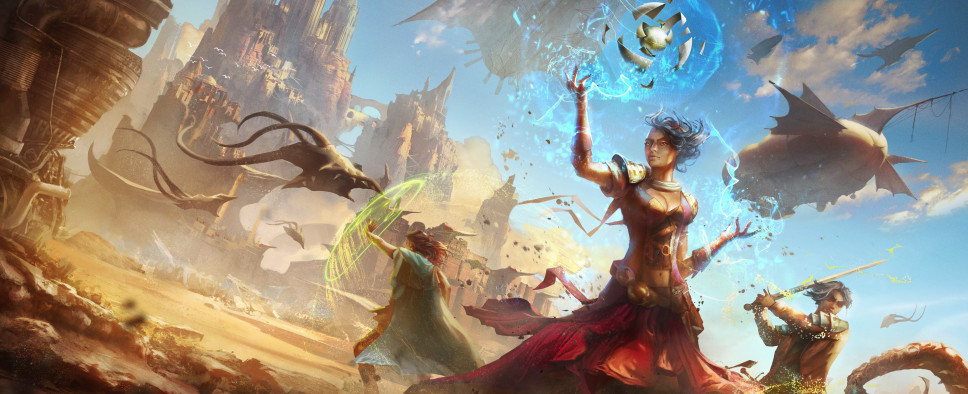Torment: Tides of Numenera Interview
-
Category: News ArchiveHits: 1926

There's an interview with Torment: Tides of Numenera project lead Kevin Saunders and design lead Adam Heine up on the Red Bull website this week, during which we learn about their primary design goals for the forthcoming RPG, how the companions will be realized, what they learned from the development of Wasteland 2, and more. A snip:
We've seen Crises described as '˜major setpieces'. Setpiece has become quite a weighted term in the last few years, particularly in triple-A games can you give us an idea of what a setpiece might look like in Numenera?
Heine: I think of Crises like boss battles, maybe because those were the 'setpieces' of the past. Although every Crisis shares the same underlying combat mechanics, each one has its own obstacles and opportunities. That's the biggest difference between Crises and regular encounters: each Crisis is handcrafted to make it unique and interesting.
In one, you might face a crime lord who is using archaic technology to keep herself out of phase and immune to your attacks. Maybe you try to time your attacks to hit her at the few times she's vulnerable, or you might try to access her technology through a control panel allowing you to control it. Or might just brute force it and kill all her minions so she's forced to deal with you herself.
In another Crisis, you might be running from an ancient horror that can't be stopped with force alone. You need to figure out how to use your environment to stop it, throw things in its way to slow it down, or just get the hell out of there.
These are just two examples, but they are both very different from each other. Although combat might play a part in each, your tactics and environment will need to change for each scenario. TTON will have about 12-15 of these 'boss battles' as well as several (optional) encounters that involve straightforward combat, ensuring that fighting is always fresh and interesting.
The skills system seems like the biggest departure from what I think of as classic CRPG formula. Why the change now, when the old system of specialist lockpick/traps/sneak etcetera worked so well?
Heine: Numenera's skill system is broader and more flexible than that of most RPGs. Instead of saying, "you have no ranks in disabling traps, so you can't even try," Numenera let's any character try anything, for a cost. In Numenera, you have three types of 'hit points' might, speed, and intellect. These stats are depleted when you're damaged, but are also resources you can draw upon to accomplish challenging tasks.
This puts more power into the player's hands. Want to pick a lock but aren't trained in it? You can spend speed points on effort to make that task easier. Or you might have an ability that lets you 'brute force' the lock, allowing you to spend might instead of speed on that particular task.
Or you might be low on speed or trying to conserve it for other speed tasks nearby, or a Crisis you sense is coming so you take the chance that your character might fail this task in exchange for making other tasks easier instead. It's up to you and your situation, making every task an interesting decision.
Additionally, this same system of skills and effort applies to every aspect of Numenera. Shooting an enemy from across the room? That's also a speed task, with the same choices as picking a lock (though obviously you'd need different skills to be already good at it). Dodge a sword? Also a speed task. Now, not only is the player empowered with deciding which tasks matter enough to spend his resources, but the player also intuitively understands how all tasks work after having accomplished one.

